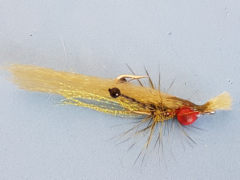My estuary & coastal waters fly box
{{start}}
Salt water fly tying has progressed a long way over the last 20 years or so and whilst old favorites like the crazy Charlie, baited breath and Clouse are featured in this fly box you will see that I have used quite contemporary materials to dress those flies in.
Also, in this fly box you will find my own recipes for a number of flies I have developed over the years to consistently target a range of species found in estuary and coastal waters around Australia.
{{end}}

{{+1}}Candy – salt water{{-1}}
{{start}}
Whilst the fly can be tied using materials such as polar fiber or craft fur or un-crinkled nylon materials such as 'Fishhair' I think that candies work better when tied with crinkly nylon fiber material such as 'Superhair' or 'Supreme hair'. Also, both these materials take on a translucency when wet and I think this is one of the triggers to the fly's success.{{end}}
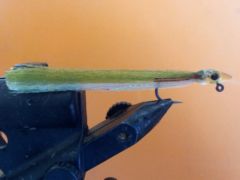
{{+1}}Candy – resin head minnow{{-1}}
{{start}}
This is a great fly to rip through the water in front of Tailor, Australian Salmon, Tarpon and any other fish that is a predator of small fish. The combination of the resin head and the body materials create a fly that is translucent and a very effective imitation of many small thin fish that that are targeted by bigger fish. This fly is much easier to tie than a candy and in my view a better fly overall.{{end}}
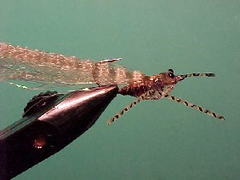
{{+1}}Mud prawn – small 5cm to 6cm long{{-1}}
{{start}}
The mud prawn is my first choice of fly for general prospecting in estuary waters or for targeting, whiting, flathead and bream. In water of only a meter or so fish it on an intermediate line. In deeper water I prefer to fish it on a sinking line. The best retrieve is a jerky but slow retrieve leaving plenty of time between strips for he fly to settle back on the bottom. used in this way it's a good representation of a prawn fleeing from its sandy retreat after being disturbed.{{end}}

{{+1}}Crazy charlie{{-1}}
{{start}}
There have been many variations and adaptations. My version is based on the original tailed version and works well in estuaries on bream, whiting and flathead etc. I tie all my crazy Charlie flies much fuller with translucent materials rather than sparse with solid materials. I also tie my crazy Charlie flies longer than the hook shank and trim them down on the water if a shorter fly is needed.{{end}}

{{+1}}Combo crab{{-1}}
{{start}}
Whilst not as realistic looking as my Leather Crab pattern the Combo Crab is my preferred crab pattern because it casts so much better and as a consequence you get more fishing time. You may notice that the fly has only three sets of legs plus claws whilst the natural has four sets of legs plus claws. You can add an extra set if you like but I have found that it is much easier dealing with only three sets of legs and it doesn't appear to diminish the quality of the representation.{{end}}
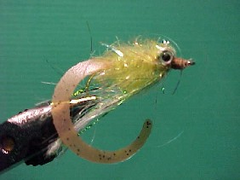
{{+1}}Chatto’s estuary fly{{-1}}
{{start}}
This fly has now accounted for bream, flathead, whiting, trevally, mullet, tailor, flounder, bass and trout. I expect it will be attractive to many other species also. Native fresh water Bass are a favourite of mine and if I could only carry one type of sinking fly to target then with the Black Estuary/Bass fly would be it.{{end}}
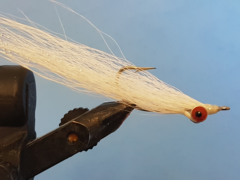
{{+1}}Clouser minnow{{-1}}
{{start}}
The Clouser in my view is the quintessential salt water fly. It can be tied in sizes to suit Bream or Billfish and with the correct dressing and size is equally at home in saltwater, trout and bass fisheries.{{end}}
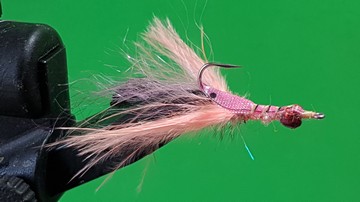
{{+1}}PET shell nipper{{-1}}
{{start}}
This PET shell nipper is significantly different to my PET shell prawn as that is unweighted and is designed to fish hook bite down whereas this nipper has a weight under its tail and is designed to be fished on the sandy bottom with the hook bite up.{{end}}
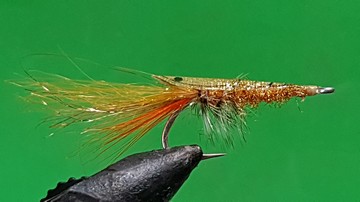
{{+1}}PET shell prawn{{-1}}
{{start}}
Prawns and shrimp are crustaceans, of the family Isopod, and are endemic to our Australian estuary waters. They are toward the top of the food chain for a lot of coastal species of fish including bream, flathead and whiting.{{end}}














